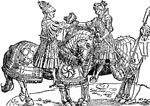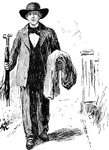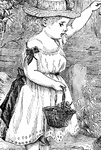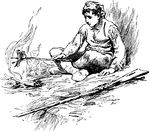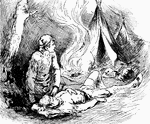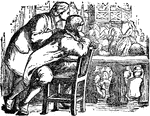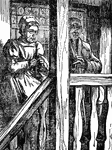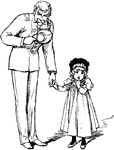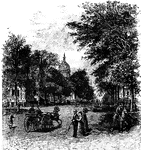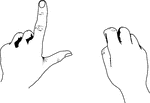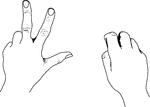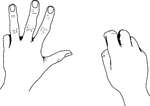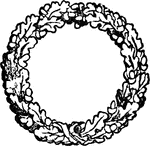
Crown
"Crowns were originally garlands of leaves; and in this form they have probably been used as an ornament…

Lamellae
"Diagram to show the way in which an outgrowing gill-process bearing blood-holding lamellae, may give…

Scorpion
"Drawing from tlife of the Italian scorpion Euscorpius italicus, Herbst, holding a blue-bottle fly with…

Still
"A "still;" and, for condensing the vapor, vats are constructed, holding serpentine pipes or "worms,"…
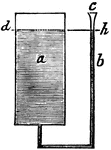
Water Pressure
"Suppose the cistern a to be capable of holding one hundred gallons, and into its bottom there be fitted…
Upper Extremity
The upper extremity of the human body. 1: Clavicle; 2: Scapula; 3: Humerus; 4: Ulna; 5: Radius; 6: Carpus;…

A Frankish Chief in Full Armor
A chief of a Frankish tribe, wearing full battle armor. He stands looking to his right holding a long…
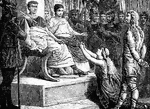
Caractacus And Claudius
Caractacus was a British Chief that had fought very bravely against the Romans. He was brought to Rome…
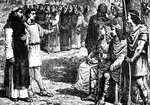
Augustine and Ethelbert
"Ethelbert met Augustine in the open air, under a tree at Canterbury, and heard him tell about the true…
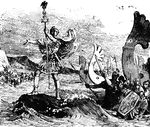
Julius Caesar
Julius Caesar heard that a little way off there was a country nobody knew anything about, except that…
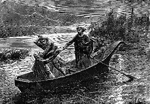
Murder of Prince Arthur
As a kind of joke, John, King Henry's youngest son, had been called Lackland, because he had nothing…
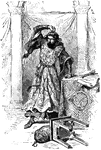
John's Anger after Signing Magna Charta
All this time John Lacklands cruelty and savageness were making the whole kingdom miserable; and at…

King Henry and His Barons
King Henry was a builder of beautiful churches. Westminster Abbey, as it is now, was one. And he was…

Onion-Peel
Four cells from dried Onion-peel, each holding a crystal of different shape, one of them twinned.
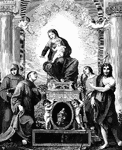
Madonna and Saints
This painting by Correggio is one of his more famous pieces depicting Madonna holding Christ in her…

Death of King Phillip
An illustration of the death of King Phillip at the hands of another Native American.
Banner
This banner has floral and vine arrangements on it with two mermaids in the center of the print.
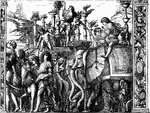
Part of the Triumphs of Julius Cesar
This painting is by Andrea Mantegna is a good example of how the artist placed the figures in the background.…

Hand
1. Nerves of the skin 2. Tendons 3. Arteries of the palm of the hand 4. Elbow nerve 5. Elbow artery…
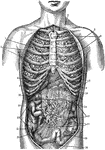
Internal Anatomy
1. Collar bone 2. Left Lung 3. Breast Bone 4. Right Lung 5. Ribs 6. Right lobe of the liver 7. Left…
Banner
This banner contains images of people with tools and weapons chasing after a duck and fox with an animal…

Saint George
This sculpture by the great artist, Donatello, is of a man dressed in armor holding a shield in front…
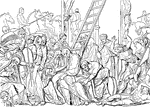
The Deposition
This sculpture by the great artist, Donatello, is of many people kneeling and standing around the body…
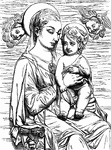
Virgin and Child
This sculpture by the great artist, Donatello, is of a woman holding a child. It is a Bas-relief that…
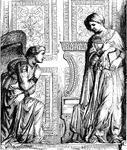
The Annunciation
This sculpture by the great artist, Donatello, is of a man holding a book and looking down at an angel…
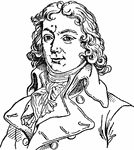
Charles Jean Marie Barbaroux
One of the greatest of the Girondists, was born at Marseilles, March 6, 1767. At first an advocate and…
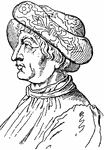
Abrecht da Barbiano
An Italian military officer; formed the first regular company of Italian troops organized to resist…
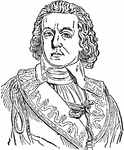
Comte de Barras
A French Jacobin, born in Province, in 1755, of an ancient family; served as second lieutenant in the…

Fra Bartolommeo
One of the most distinguished masters of the Floretine school of painting, born at Savignano, in Tuscany,…

Barrel and Fusee
"This is done in the mechanism of the watch, of which a, is the barrel containing the power in the form…

Double Convex Lens Magnifing an Arrow
"Double convex lenses are used in the eyeglasses for old people, becoming more spherical according to…
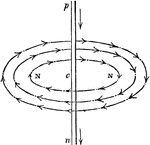
Circular Motion of the [Electric] Fluid
"Thus, if we suppose the conducting wire be placed in a vertical situation, as shown, and p, n, the…

Nicholson Hydrometer
"The Nicholson hydrometer of constant volume is a hollow cylinder carrying at its lower end a basket,…

Magdeburg Hemispheres
"Grease the edges to make more sure of a tight joint, fit the hemispheres to each other, and exhaust…

Polarization of Light
"The effect of holding polarizing lenses at right angles to each other." -Avery 1895
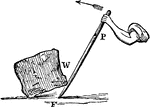
Crowbar and Stone
"... a farmer with a crowbar, as shown, can move a rock which with his hands alone he could not stir."…
